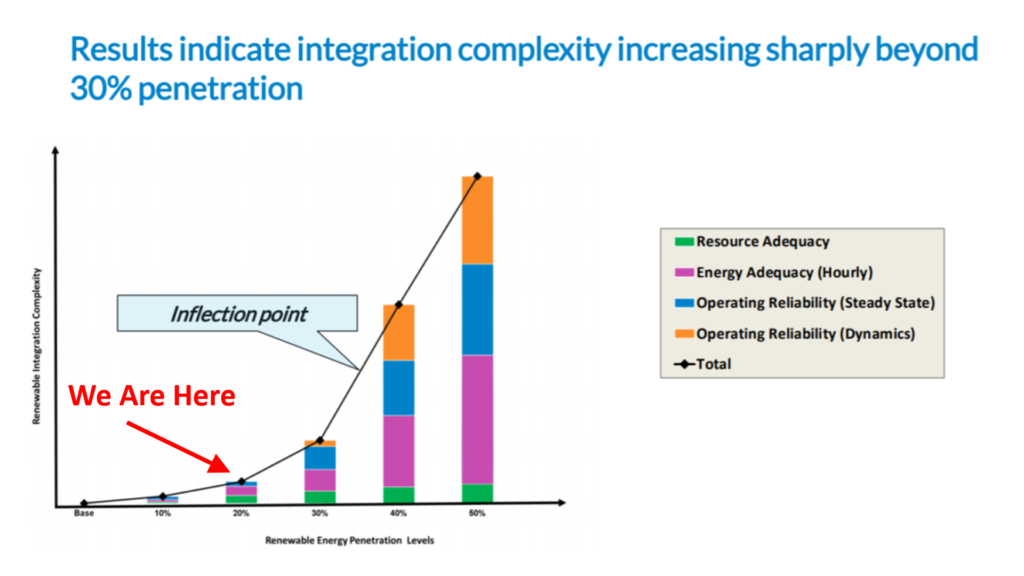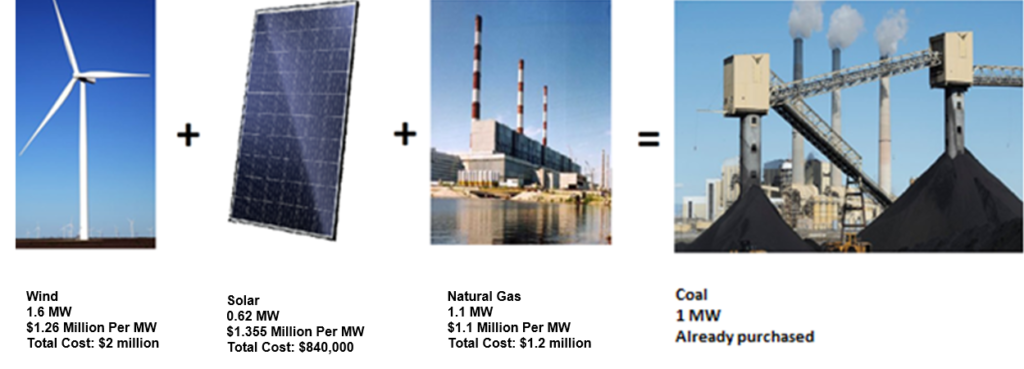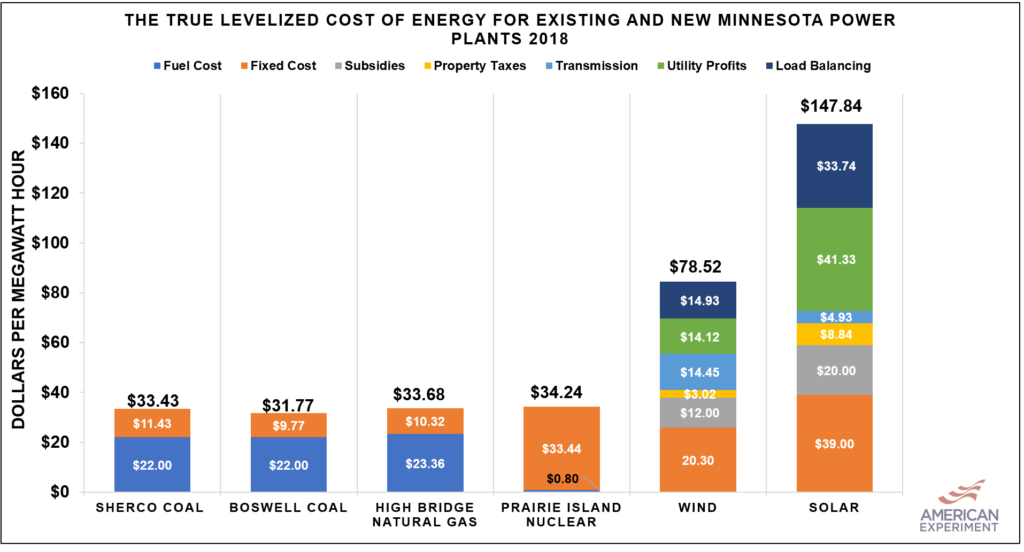Study in International Journal of Sustainable Energy Finds Wind Turbines Are Not Cost Effective
A newly-released study in the International Journal of Sustainable Energy confirms what we at Center of the American Experiment have been saying for a long time, the metric that is often used to compare the cost of different energy resources, the Levelized Cost of Energy (LCOE), is not an appropriate metric to model the cost of weather-dependent resources like wind and solar, and that wind turbines are not cost-effective when their intermittency and unreliability are taken into account.
Levelized Cost of Energy Estimates in A Weather-Dependent World
Levelized Cost of Energy estimates used to make sense 20 years ago because the only power plants that were being built at any scale were power plants that could be turned on and off to meet electricity demand. At this time, no one was seriously planning to build enough power plants that are dependent on the weather to run the entire grid. No one was planning this because it is an incredibly inefficient way to build the grid.
The study identifies three main ways that the LCOE metric is now outdated:
“Crucial in this discussion is an approach called Levelized Cost Of Energy1 (LCOE), whereby the total amount of power over the lifetime of an energy source is divided by the life cycle costs over the lifetime of the same energy source (Joskow 2011). The problem is that it (1) ignores the additional
cost of integrating non-dispatchable energy sources into the grid, (2) the economic- and environmental externalities, and (3) it has an implicit focus on new energy source development and not existing source generation (Benes and Augustin 2016). Additionally, LCOE ignores the value of the plant’s output to the grid (US EIA 2019).”
This paragraph is something all lawmakers who make energy policy need to read because renewable energy special interest groups routinely site LCOE figures from groups like Lazard and Bloomberg New Energy finance while knowing full well that these cost estimates do not account for the major costs incurred by integrating these renewable energy sources on the grid.
However, the footnotes in the Lazard publication in particular state that these costs are not reflected in their LCOE estimates.

Integration Costs
The study found the cost of integrating renewable energy sources increases substantially as more wind and solar are added to the grid for four main reasons:
“(1) At moderate and higher wind market shares (>20%), marginal integration costs are in the same range as generation costs.
(2) Integration costs significantly increases with growing market shares.
(3) The profile costs are the largest market share of the integration costs.
(4) Short-term System LCOE are larger than long-term System LCOE. This is due to capacity of dispatchable energy sources need time to adjust, i.e. reduce to account for the introduction of the VREs.”
This finding may seem counterintuitive because the cost of wind turbines and solar panels has fallen significantly over the last 10 years, but the same result was found by the regional grid operator, the Midcontinent Independent Systems Operator (MISO). The graph below is from MISO’s renewable energy integration analysis, and it shows the complexity of integrating intermittent wind and solar increases exponentially as we try to incorporate more of them on the grid.

Costs increase because wind turbines require massive investments in transmission lines, which will likely exceed more than $10 billion in Minnesota over the coming decade. The fact that the wind doesn’t always blow and the sun doesn’t always shine means we still need reliable electricity sources, like coal, natural gas, or nuclear plants, to ensure the lights stay on when the weather doesn’t cooperate. This is why Minnesota utilities plan to build a combined 3.32 megawatts of wind, solar, and natural gas for every megawatt of coal they plan to close, as you can see in the figure below.

Because wind turbines in Minnesota only produced electricity 33 percent of the time, on a fleet-wide basis, in 2018, and solar panels only produced electricity 18.6 percent of the time, which means other electricity sources were needed the majority of the time. And because we never really know when the wind will blow, and we can’t be sure it won’t be too cloudy or too snowy for solar to generate significant amounts of electricity, we still need to have enough power plants online to make sure the lights stay on when wind and solar are producing zero electricity.

As a result, wind and solar require “backup generators” to provide electricity when the weather doesn’t cooperate to make sure the lights don’t go out. Having wind, solar, and backup generators means we have to pay for three types of power plants, wind, solar, or natural gas, and this increases the cost of electricity. Because these costs are only incurred because wind and solar are not reliable, these costs should be attributed to the wind or solar. At American Experiment, we refer to these costs as “Load Balancing Costs.”

Once all the integration costs are accounted for, wind and solar are much more expensive than the existing power plants we already have in the state, as you can see in the graph above. Our findings are supported by the findings of the International Journal of Sustainable Energy study.
Lifespan:
Another important aspect addressed in the International Journal of Sustainable Energy study is the limited lifespan of wind turbines and solar panels compared to other generators:
“Another issue often ignored is that when different technologies have different life-span the comparison can be difficult. Typically, a 20- or 30-year recovery period is chosen (see IRENA 2012; Stacy and Taylor 2019), but when the competing technologies last half a century or more, a simple, direct
comparison is faulty, as discussed later. Incredibly, the desire to actually use improved approaches is not there – not even adjusting the life span in the LCOE calculation to match the real life-span – in fact, Doe eland and Trevino (2014) state flat out that improved methods are not used in decision making.”
There is also mounting evidence that some wind facilities do not even last for 20 years, with many facilities choosing to “repower” their facilities after 10-15 years of operation. These repowering projects could have been primarily driven by the fact that repowering a wind facility allows them to scoop up more federal tax credit. Either way,y it demonstrates that the 20-year lifespan of wind turbines is not always realized.
Conclusions
There were many other great takeaways from the paper, and I encourage you all to read the full paper (21 pages!) in the PDF viewer below.
On the levelized cost of energy of windfarms